Frank Moss Bennett
British, (1874-1952)Studying the Map
Oil on canvas, signed & dated (19)27
A well-executed genre scene by Frank Moss Bennett of a cavalier studying a map. The man is depicted wearing a feathered hat and red cape over a 17th century costume. He is shown half turned towards a fireplace gazing at a map of England, Scotland and Wales as he smokes a clay pipe. By his side, his gloved hand rests over the pommel of a sword holding the other glove. Behind him can be seen a table with supper on it and a wooden stool. The homely but rustic nature of the room indicates it is most likely a tavern.
Frank Moss Bennett was a portrait and genre painter who was born in Liverpool on November 15, 1874. He was the son of the Iron Founder Henry Mellor Bennett who was also became mayor of Liverpool. His family’s wealth enabled him to receive a good education, initially with a governess and then at Clifton College in Bristol. His talent for art emerged at a young age, however it was not until he left Bristol that he decided to follow a career in painting.
He moved to London in 1892, most likely with his family who went to live in Croydon after his father’s retirement. There he studied at the Slade School of Art where he was taught by Henry Tonks and John Singer Sargent. He also met fellow artist Eddie Wells who became his friend, travel partner and brother-in-law. He later attended the St John’s School of Art and in 1896 entered the Royal Academy school, winning a gold medal and a scholarship to travel. He began exhibiting at the Royal Academy from 1898 with a work entitled ‘A Book Plate’, continuing to exhibit there until 1929. He also exhibited at the Paris Salon, the Royal Institute of Oil Painters and the Royal Institute of Painters in Watercolour.
In 1900, Bennett used his scholarship money to go on a painting expedition to Italy with his friend Wells. On his return he lived with his family at 18 Warrington Road, Croydon and took a studio nearby at Alipore, Duppas Hill, where he began specialising in historical genre and portraits. His work portrayed life in seventeenth and eighteenth century England, depicting figures in tavern interiors, gentlemen discussing affairs of State or at leisure in their homes such as this fine example. He wanted his works to be historically accurate and used authentic props and antiques. He also accrued a large collection of costumes, some of which were later given to the Platt Hall Museum, Manchester and the Museum of London. He also developed an interest in historical architecture, particularly Tudor and made many sketches of buildings to use in his paintings.
In 1907, he married Margaret Alma Pellew and together they had two children, Barbara and Edward. From 1911, the family lived at 188 Ebury St, Pimlico until 1938, when they relocated from London to a large farm called Whetcombe Barton in Devon. Bennett remained in Devon until his death on 23 February, 1952. Many examples of his works can be found in galleries and museums including the Grundy Art Gallery, Blackpool, Sutton Museum, Royal Albert Memorial Museum and the National Portrait Gallery. A number of his works are also held by the National Trust, Cambridge University & Staffordshire County Council.
© Benton Fine Art
| Presentation | The work is housed in a new, English made gilt frame which is in excellent condition. |
| Condition | As with all of our original antique oil paintings, this work is offered in ready to hang gallery condition, having been professionally cleaned, restored and revarnished. |
Dimensions
| Image Size | 12.75 inches x 10.75 inches (32.5cm x 27.5cm) |
| Framed Size | 17.25 inches x 15.25 inches (44cm x 39cm) |
You May Also Like









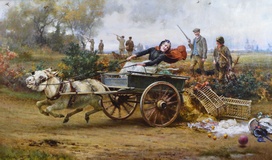
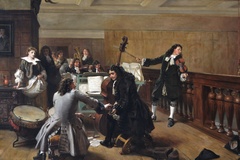
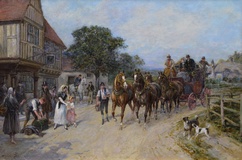
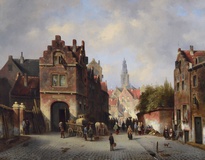
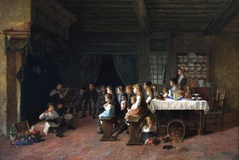
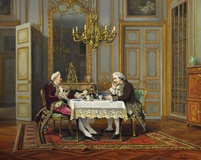
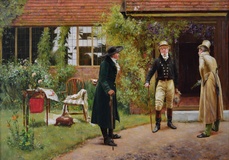
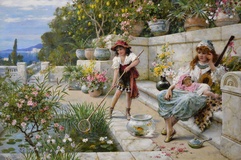
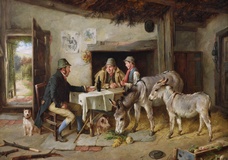
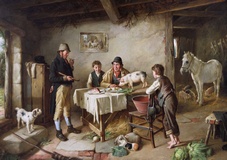
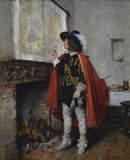 Studying the Map - Frank Moss Bennett
Studying the Map - Frank Moss Bennett

